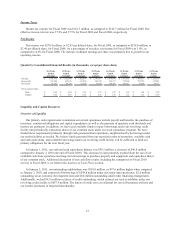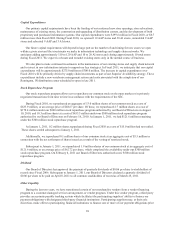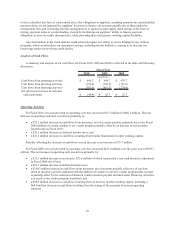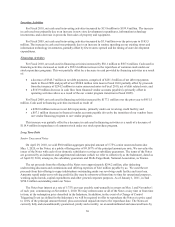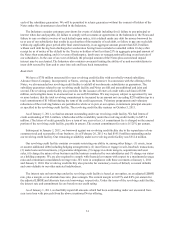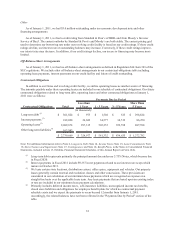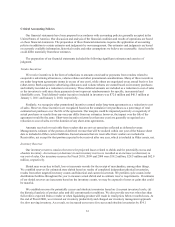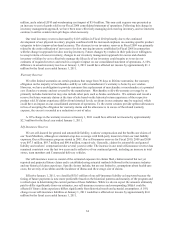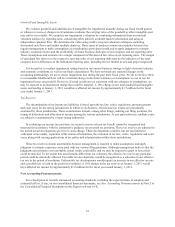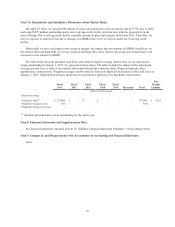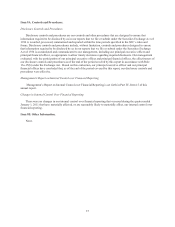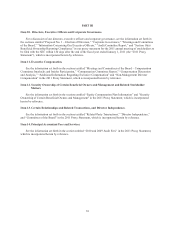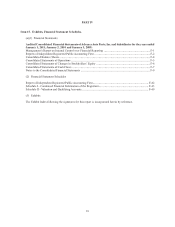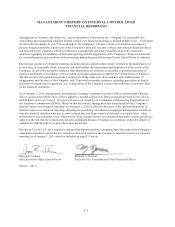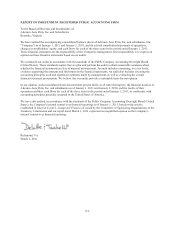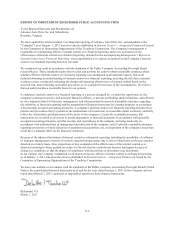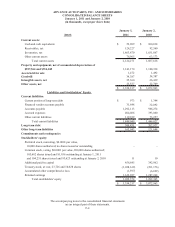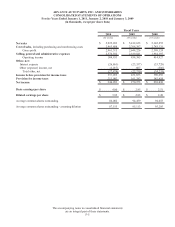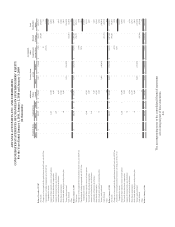Advance Auto Parts 2011 Annual Report Download - page 50
Download and view the complete annual report
Please find page 50 of the 2011 Advance Auto Parts annual report below. You can navigate through the pages in the report by either clicking on the pages listed below, or by using the keyword search tool below to find specific information within the annual report.35
Goodwill and Intangible Assets
We evaluate goodwill and indefinite-lived intangibles for impairment annually during our fiscal fourth quarter
or whenever events or changes in circumstances indicate the carrying value of the goodwill or other intangible asset
may not be recoverable. We complete our impairment evaluation by combining information from our internal
valuation analyses by reporting units, considering other publicly available market information and using an
independent valuation firm. We determine fair value using widely accepted valuation techniques, including
discounted cash flows and market multiple analyses. These types of analyses contain uncertainties because they
require management to make assumptions as a marketplace participant would and to apply judgment to estimate
industry economic factors and the profitability of future business strategies of our company and our reporting units.
These assumptions and estimates are a major component of the derived fair value of our reporting units. The margin
of calculated fair value over the respective carrying value of our reporting units may not be indicative of the total
company due to differences in the individual reporting units, including but not limited to size and projected growth.
It is our policy to conduct impairment testing based on our current business strategy in light of present industry
and economic conditions, as well as our future expectations. We have not made any material changes in the
accounting methodology we use to assess impairment loss during the past three fiscal years. We do not believe there
is a reasonable likelihood there will be a material change in the future estimates or assumptions we use to test for
impairment losses on goodwill. However, if actual results are not consistent with our estimates or assumptions, we
may be exposed to an impairment charge that could be material. A 10% change in our total goodwill and intangible
assets outstanding at January 1, 2011 would have affected net income by approximately $3.7 million for the fiscal
year ended January 1, 2011.
Tax Reserves
The determination of our income tax liabilities is based upon the tax law, codes, regulations, pronouncements
and court cases for the taxing jurisdictions in which we do business. Our income tax returns are periodically
examined by those jurisdictions. These examinations include, among other things, auditing our filing positions, the
timing of deductions and allocation of income among the various jurisdictions. At any particular time, multiple years
are subject to examination by various taxing authorities.
In evaluating our income tax positions, we record a reserve when a tax benefit cannot be recognized and
measured in accordance with the authoritative guidance on uncertain tax positions. These tax reserves are adjusted in
the period actual developments give rise to such change. Those developments could be, but are not limited to:
settlement of tax audits, expiration of the statute of limitations, the evolution of tax law, codes, regulations and court
cases, along with varying applications of tax policy and administration within those jurisdictions.
These tax reserves contain uncertainties because management is required to make assumptions and apply
judgment to estimate exposures associated with our various filing positions. Although management believes that the
judgments and estimates are reasonable, actual results could differ and we may be exposed to gains or losses that
could be material. To the extent that actual results differ from our estimates, the effective tax rate in any particular
period could be materially affected. Favorable tax developments would be recognized as a reduction in our effective
tax rate in the period of resolution. Unfavorable tax developments would require an increase in our effective tax rate
and a possible use of cash in the period of resolution. A 10% change in the tax reserves at January 1, 2011 would
have affected net income by approximately $1.2 million for the fiscal year ended January 1, 2011.
New Accounting Pronouncements
For a description of recently announced accounting standards, including the expected dates of adoption and
estimated effects, if any, on our consolidated financial statements, see New Accounting Pronouncements in Note 2 to
the Consolidated Financial Statements in this Report on Form 10-K.




